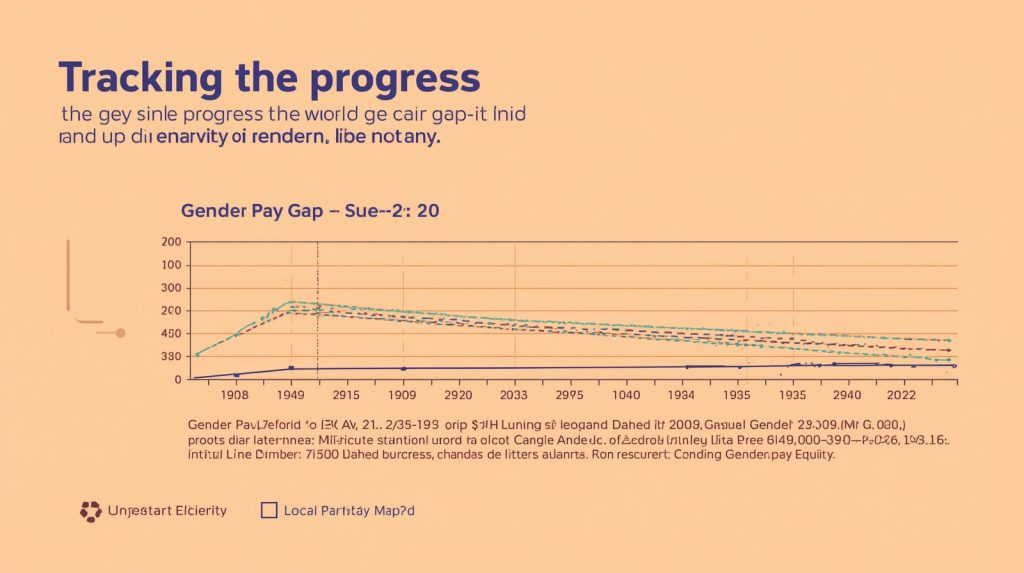Introduction
Gender bias in the workplace remains a pervasive issue, affecting women across various industries and roles. Despite the strides made toward gender equality, women continue to face challenges due to biases that often go unnoticed. This article will explore practical ways to recognize and overcome gender bias, empowering women to create a more inclusive and equal work environment. By addressing these biases head-on, women can not only elevate their careers but also contribute to building a fairer workplace culture for future generations.
Understanding Gender Bias in the Workplace
What is Gender Bias?

Gender bias refers to the unequal treatment or perception of individuals based on their gender. It can manifest in many forms, including unequal pay, fewer opportunities for career advancement, stereotypical expectations, and discriminatory behaviour. In the workplace, gender bias can be both overt and subtle, impacting women in different ways depending on their position and industry.
Types of Gender Bias
- Stereotypical Bias
- Women are often expected to take on roles that are nurturing or administrative, even when they excel in leadership or technical positions.
- Performance Bias
- Women’s accomplishments are sometimes downplayed or attributed to factors other than their skill or effort. For example, a woman may be praised for her “collaborative spirit” instead of her individual contribution.
- Exclusion Bias
- This occurs when women are deliberately or subconsciously excluded from important meetings, decision-making processes, or social events that could further their careers.
- Pay and Promotion Bias
- Women often face a wage gap compared to their male counterparts for the same work. They may also encounter slower promotion rates despite equal or superior qualifications.
Why Gender Bias Matters
Gender bias isn’t just an issue for individual women; it harms the organisation as a whole. Companies that overlook the effects of gender bias may suffer from:
- Decreased employee morale and engagement.
- Increased turnover rates.
- Missed opportunities for innovation.
- There is a lack of diversity in leadership positions.
Steps to Overcome Gender Bias in Your Workplace

1. Recognize and Address Bias
The first step toward overcoming bias is acknowledging that it exists. Whether it’s in the form of microaggressions or systemic barriers, identifying the Bias is crucial to addressing it.
How to Recognize Bias:
- Listen for stereotypical comments or assumptions made about women’s roles or abilities.
- Watch for imbalances in opportunities for career growth, such as a lack of representation in leadership roles.
- Monitor how feedback is given: Is it different for men and women, even when the performance is similar?
Once you identify these biases, confront them with clear communication. When discussing issues of Bias with your colleagues or supervisors, do so respectfully but assertively, using facts to support your claims.
2. Build a Strong Support Network
Having a network of allies can be invaluable in combating bias. These allies can include both men and women who are committed to gender equality in the workplace.
How to Build a Supportive Network:
- Engage with coworkers who share similar values and stand against discrimination.
- Look for mentors who have experience in overcoming gender bias, as their guidance can be invaluable.
- Join professional groups or networks dedicated to empowering women in your industry.
3. Advocate for Fair Policies

Organizations must take active steps to minimize sexism. Women can advocate for policies that promote gender equality, such as:
- Equal pay audits to ensure fairness in compensation.
- Clear and transparent promotion criteria.
- Flexible working arrangements that support work-life balance for all genders.
Advocacy Tips:
- Initiate discussions about gender equality in team meetings or one-on-one conversations with managers.
- Provide research or case studies that demonstrate the positive impact of diverse leadership teams.
4. Develop Your Personal Brand
One of the most effective ways to overcome gender bias is to focus on your own growth and career advancement. Women often face biases related to their competence or leadership skills, but consistently showcasing your abilities can help break down those stereotypes.
Personal Branding Strategies:
- Take credit for your successes and ensure others recognize your contributions.
- Share your accomplishments in team meetings or via company newsletters.
- Pursue further education, training, or certifications that enhance your expertise and visibility.
5. Call Out Bias When You See It
Gender bias often goes unnoticed because it is normalized in many corporate cultures. If you encounter it, do not be afraid to speak up. Calling out biased behaviour or language helps create awareness and sets a precedent for others.
How to Call Out Bias:
- Stay calm and professional when addressing biased comments or actions.
- Use “I” statements to express how the behaviour affects you personally and professionally (e.g., “I felt excluded when I wasn’t invited to that meeting”).
- Encourage open dialogue on the issue of gender bias.
6. Seek Feedback and Constructive Criticism
Seeking feedback is vital for growth, but it’s essential to ensure that feedback is delivered in a fair and unbiased manner. If you feel that you’re being judged differently because of your gender, don’t hesitate to request constructive feedback in a professional setting.
Feedback Tips:
- Ask for specific examples of areas where you can improve, rather than vague or generalized comments.
- If feedback seems biased or inconsistent, request a second opinion from a trusted colleague or mentor.
Gender Bias in Different Regions: A Localised Approach

Gender Bias in the USA
In the USA, sexism is prevalent across various industries, especially in STEM (Science, Technology, Engineering, and Mathematics) fields. Women in these sectors are often underrepresented and face implicit Bias from their colleagues and superiors. To address this, companies are increasingly adopting policies like blind recruitment to minimize unconscious Bias and ensure that hiring decisions are based purely on skills and qualifications. In North America, legal frameworks like the Equal Employment Opportunity Commission (EEOC) in the US and human rights tribunals in Canada offer formal recourse. The corporate dialogue around Diversity, Equity, and Inclusion (DEI) is prominent, creating more structured (though not always effective) avenues for reporting bias.
Gender Bias in Europe
In countries like Sweden and Norway, gender equality policies are well-established, but challenges persist. Women in European countries face issues like the gender pay gap and limited representation in leadership positions. However, many organizations are introducing quotas and other measures to address these disparities.
The European Institute for Gender Equality actively promotes policy change. Countries like Iceland and France have strong legislation on pay transparency, legally requiring companies to prove they pay employees equally for equal work—a powerful tool against the pay gap. Cultural norms around direct communication can also influence how bias is addressed.
Gender Bias in Australia
Australia has made significant progress in gender equality in recent years, but challenges remain, particularly in terms of pay equity. Women in Australia continue to earn less than their male counterparts, and they are underrepresented in top leadership positions. However, Australia’s emphasis on workplace diversity initiatives provides a strong foundation for overcoming these challenges.
Case Studies: Overcoming Gender Bias

Case Study 1: Google’s Diversity Efforts
Google has made significant strides toward addressing gender bias in its workplace by implementing programs like unconscious bias training and gender-neutral hiring practices. The company’s commitment to diversity and inclusion has resulted in improved representation of women, particularly in technical roles.
Case Study 2: UK Government’s Gender Pay Gap Reporting
In 2017, the UK Government introduced mandatory gender pay gap reporting for large organizations. This initiative has helped raise awareness about gender pay inequality and spurred many organizations to take action to close the gap.
FAQ Section: Answering Your Questions on Gender Bias
Q1: What is gender bias in the workplace?
A1: Gender bias refers to the unequal treatment or perception of employees based on their gender. It often leads to disparities in pay, promotions, and job opportunities.
Q2: How can I overcome gender bias at work?
A2: Overcoming gender bias involves recognizing the Bias, advocating for fair policies, building a support network, developing your personal brand, and calling out Bias when you see it. Alternatively, you can discuss it privately later, stating how the comment made you feel.
Q3: Why is gender bias harmful to women in the workplace?
A3: Gender bias can limit women’s career advancement, lead to pay inequality, and create an unwelcoming work environment. It affects overall productivity and workplace morale.
Q4: How can organizations reduce gender bias?
A4: Organizations can reduce gender bias by implementing policies such as equal pay audits, diversity training, and transparent promotion criteria.
Q5: What are some examples of gender bias in the workplace?
A5: Examples of gender bias include unequal pay for equal work, exclusion from key meetings or decision-making processes, and stereotypical assumptions about women’s roles.
Conclusion & Call to Action
Overcoming gender bias in the workplace requires proactive effort, both individually and collectively. By recognizing the biases that exist and taking steps to address them, women can create a more inclusive and equitable work environment. It’s time to break the barriers that gender bias imposes and pave the way for a future where every individual, regardless of gender, has the opportunity to thrive.
Please take action today: Start by identifying one area of gender bias in your workplace and make a plan to address it. Together, we can change the narrative for women in the workplace.
